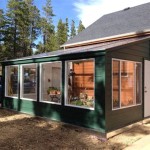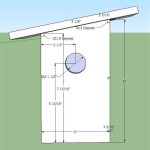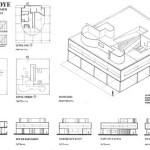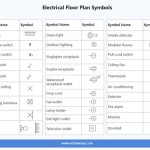```html
Mini House Plants: A Guide to Cultivating Tiny Green Treasures
The allure of miniature house plants has significantly increased in recent years. Their compact size makes them ideal for urban dwellers, apartment living, and anyone looking to add a touch of greenery to small spaces. These plants offer the same aesthetic benefits as their larger counterparts but require less space and often less maintenance, making them a popular choice for both seasoned plant enthusiasts and beginners alike.
Miniature house plants are not necessarily genetically dwarfed varieties. Many are simply juvenile plants of species that will grow to larger sizes if given the opportunity. However, proper cultivation techniques, including limiting pot size and carefully managing nutrients, can maintain their miniature form for extended periods.
Selecting the Right Mini House Plants
Choosing the appropriate mini house plant involves considering several factors, primarily the available light, humidity levels, and personal preferences. Different species have varying requirements, and selecting plants that are well-suited to the home environment ensures their long-term health and vitality. Understanding the specific needs of each plant is crucial for successful cultivation.
Some popular options for mini house plants include succulents, cacti, air plants (Tillandsia), and certain varieties of ferns and peperomias. Succulents, such as Echeverias and Haworthias, are well-suited for bright, sunny locations and require infrequent watering. Cacti, similar to succulents, thrive in dry conditions and bright light. Air plants, on the other hand, do not require soil and obtain nutrients from the air; they need regular misting or soaking. Ferns and peperomias generally prefer indirect light and higher humidity levels.
When selecting a mini house plant, it is essential to inspect the plant for signs of pests or diseases. Look for healthy foliage, a strong root system (if visible), and absence of discoloration or blemishes. Purchasing plants from reputable nurseries or garden centers can reduce the risk of introducing unhealthy plants into the home.
Essential Care Tips for Thriving Mini House Plants
Proper care is paramount for maintaining the health and longevity of mini house plants. This includes attentive watering practices, appropriate lighting, and careful attention to humidity levels. Each aspect of plant care contributes to the overall well-being of the plant and its ability to thrive in a confined space.
Watering is often the most critical aspect of plant care. Overwatering is a common mistake, especially with succulents and cacti, which can lead to root rot. It is generally recommended to allow the soil to dry out slightly between waterings. The frequency of watering will depend on the plant species, pot size, and environmental conditions. A good rule of thumb is to check the soil moisture before watering and only water when the top inch or two of soil feels dry to the touch.
Lighting is another essential factor. Most mini house plants require bright, indirect light. Direct sunlight can scorch the leaves, while insufficient light can lead to stunted growth and leggy stems. Placing plants near east- or west-facing windows or using grow lights can provide the necessary light levels. Observation is key; if the plant's leaves are turning pale or the stems are stretching towards the light source, it may need more light.
Humidity is often overlooked, but it can be crucial for certain species, particularly ferns and air plants. Increasing humidity around plants can be achieved by grouping plants together, using a humidifier, or placing plants on a tray filled with pebbles and water. The water evaporates and increases the humidity in the immediate vicinity of the plants. Misting plants regularly can also help, but it is important to avoid over-misting, which can lead to fungal diseases.
Fertilizing mini house plants is essential to provide them with the nutrients they need to grow and thrive. However, because they are in small pots, it's crucial to use a diluted fertilizer solution. A balanced liquid fertilizer, diluted to half or even a quarter of the recommended strength, is generally appropriate. Fertilize only during the growing season (spring and summer) and avoid fertilizing during the dormant season (fall and winter).
Repotting is necessary as the plants grow and their roots become crowded in their pots. This usually needs to happen every one to two years. Use a well-draining potting mix specifically formulated for the type of plant being repotted. When repotting, choose a pot that is only slightly larger than the previous one. Over-potting can lead to excess moisture retention, which can be detrimental to the plant's health.
Creative Display Ideas for Mini House Plants
The small size of mini house plants makes them incredibly versatile when it comes to display options. Their diminutive stature allows for creative arrangements and placements that can add a touch of personality to any space. From terrariums to tiny shelves, the possibilities are virtually endless.
Terrariums are a popular choice for displaying mini house plants, especially those that prefer high humidity. A terrarium is a closed or partially closed environment that creates a humid microcosm for plants to thrive in. Glass containers, such as jars, bowls, or even repurposed bottles, can be used to create a terrarium. Layering the bottom of the terrarium with gravel, charcoal, and potting soil provides drainage and nutrients for the plants. Choosing plants that have similar light and moisture requirements is essential for creating a successful terrarium.
Small shelves or wall planters are another great way to display mini house plants, especially in small spaces. Shelves can be mounted on walls or placed on desks or tables to create a vertical garden. Wall planters are a space-saving solution that allows for displaying plants in a unique and eye-catching way. Choosing lightweight pots and mounting hardware is essential to ensure the shelves and planters can support the weight of the plants.
Grouping mini house plants together in a tray or on a tiered stand can create a stunning visual display. This arrangement not only looks aesthetically pleasing but also helps to increase humidity around the plants. Mixing and matching different plant species and pot sizes can add visual interest and create a unique and personalized display. Consider the color and texture of the plants and pots when creating a grouping to create a harmonious and balanced arrangement.
Using repurposed containers, such as teacups, mugs, or even eggshells, can add a touch of whimsy to the display of mini house plants. These containers are often small enough to accommodate the roots of mini plants and can be decorated or painted to match the decor of the home. Ensure that the containers have drainage holes or add a layer of gravel at the bottom to prevent water from accumulating around the roots.
Regardless of the display method chosen, it is important to consider the light and humidity requirements of the plants. Placing the plants in a location that meets their specific needs is essential for their long-term health and vitality. Regularly rotating the plants can ensure that they receive even light exposure and prevent them from leaning towards the light source.
```
Miniature House Plants For Small Spaces Fafard

10 Small Houseplants Perfect For Tight Spaces Garden Design

Indoor Plants Mini Foliage Assortment In 2 Pots Dish Garden Terrarium Fairy Arts Craft Diy Please Select Heat If Needed

Discover The Most Beautiful Small Indoor Plants To Brighten Your House Floraqueen En

7 Super Cute Mini Indoor Plants Plant Decor

How To Grow And Take Care Of Indoor Plants

10 Small Houseplants Perfect For Tight Spaces Garden Design

Top 10 Miniature Dwarf Plants In

Indoor Plants The Home Depot

Mini Jungle Indoor House Plants Delivered To Your Doo








